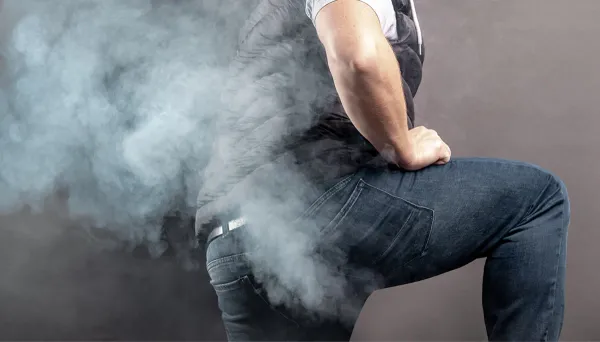Condensation within homes, a seemingly minor issue characterised by water droplets on windows and walls, is increasingly becoming a major concern for Australian homeowners. This blog post aims to dissect the complexities of condensation, its implications on home health and energy efficiency, and offers insights into effective management strategies.
The Rising Tide of Moisture Problems
In recent years, Australian homes have witnessed a significant uptick in moisture-related issues. This rise isn't merely a cosmetic inconvenience but poses severe risks to both the structural integrity of buildings and the health of their inhabitants. High internal humidity and the subsequent accumulation of moisture can lead to what are often referred to as 'sick homes,' environments conducive to mould and fungi growth. Beyond the health hazards, such moisture problems can also erode the thermal resistance of a home, leading to increased energy consumption and structural decay.
Water Vapour: The Invisible Culprit
One of the key actors in this scenario is water vapour. This gaseous form of water is both invisible and highly mobile, making it a significant challenge to manage. In typical Australian homes, which often have numerous air gaps, water vapour finds easy passage, leading to its condensation in unexpected places. The resulting moisture can threaten the durability, energy efficiency, and safety of homes, making its effective management a priority in modern home design and maintenance.
Embracing a Holistic Approach
The management of moisture and condensation in homes requires a holistic approach. It's essential to recognise that a home's airtightness, ventilation, insulation, and moisture control are deeply interconnected. Focusing on one of these elements without considering the impact on others can lead to suboptimal outcomes, or worse, exacerbate existing problems. Thus, a comprehensive strategy that addresses all these aspects is vital for achieving an energy-efficient and healthy home.
The Concept of the Double Envelope
Modern homes typically function within the paradigm of a double envelope, consisting of both internal and external layers. The external envelope protects against external elements like weather and fire, while the internal envelope comprises the interior walls, ceilings, and floors. Both these layers play a critical role in the management of moisture, and changes to one can significantly impact the other.
The Evolution of Construction Methods
The construction methods for homes have evolved considerably, particularly in terms of insulation. While increased insulation has reduced visible condensation within homes, it has inadvertently shifted the problem to less visible areas, such as roof spaces and wall cavities. This unseen condensation can be more problematic, leading to structural damages without early detection.
Ventilation Versus Air Leakage
A common area of confusion in moisture management is distinguishing between ventilation and air leakage. Ventilation refers to the deliberate system for air exchange within a home and includes components like exhaust fans and vents. In contrast, air leakage results from gaps and imperfections in the building's structure and is typically uncontrolled. It's crucial to strike a balance between these two, ensuring adequate ventilation while minimising unwanted air leakage.
Dew Point and Relative Humidity
The concepts of dew point and relative humidity are central to understanding condensation. The dew point is the temperature at which air can no longer hold all of its water vapour, which then condenses into liquid. Relative humidity, on the other hand, refers to the amount of water vapour present in the air relative to the maximum amount it can hold at a given temperature. Managing these elements is key to preventing condensation.

Strategies for Prevention and Management
To effectively tackle moisture in homes, several strategies can be employed:
- Reducing Moisture Load: This involves designing homes with proper ventilation systems to remove humid air and replace it with drier air. For instance, installing externally ducted exhaust fans in wet areas and encouraging the use of openable windows can significantly help.
- Managing Internal Moisture Escape: Ensuring that the home's internal envelope is well-insulated and sealed helps in minimising the escape of moist air into interstitial spaces, thus reducing the risk of unseen condensation.
- Balancing Moisture in Interstitial Spaces: Using vapour-permeable materials for walls and roofs allows any moisture that does enter these spaces to dissipate, preventing accumulation and the subsequent problems it causes.
Climate-Specific Strategies
It's important to note that moisture management strategies can vary significantly based on the climate. The requirements in cooler climates like Canberra, Melbourne, and Hobart will differ from those in warmer or more humid regions. This necessitates a site-specific approach to effectively manage moisture issues.
Navigating NCC Regulations
The National Construction Code (NCC) has introduced regulations aimed at managing condensation, particularly in colder climate zones. These regulations, which became mandatory from May 2019, mark a significant step in addressing moisture management in home construction. They mandate the use of vapour-permeable membranes in certain areas, which is a crucial element in preventing moisture buildup.
Conclusion
Managing condensation in Australian homes is a complex but vital task. It requires a nuanced understanding of moisture dynamics, construction practices, and the right balance between ventilation and insulation. By adopting an informed, holistic approach and staying abreast of regulatory changes, homeowners and builders can effectively tackle this issue, ensuring healthier, more energy-efficient







